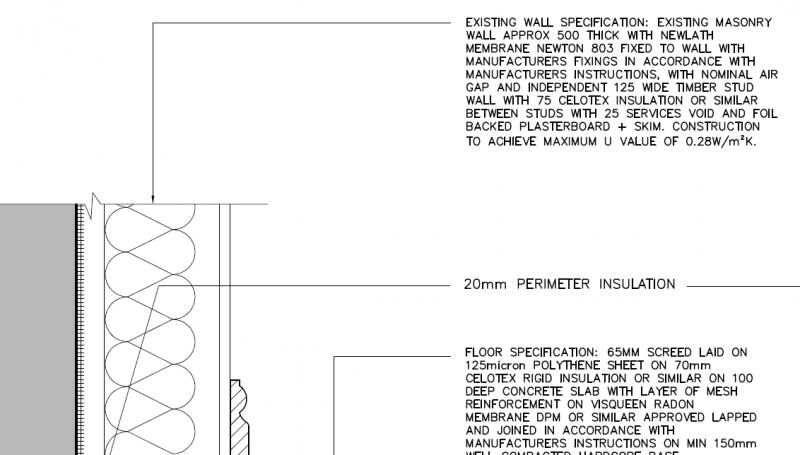House built in early 1700's.
This wall is stone on inside, rendered on outside
My guess is that it is double skin stone with rubble infill, and that the outside render and paint is modern and problematic!
However, the room I'm renovating was drylined decades ago with some kind of fibreboard on light batten nailed into wooden plugs. ...and for most of the room it is still working okay - reasonably dry.
One section of wall has had damp problems - rotten battens, mouldy fibreboard and wallpaper.
The lime plaster behind is variable, some soft and hollow, I have removed, but much of it still sound.
My guess is that the damp has 2 causes:
-some kind of leak in the corner - water running down inside wall after rain - I've done some sealing on the outside around various plumbing - this leak seems to have stopped - possibly I've fixed it, possibly just not had the wind back in the same direction!
-more general damp in the stonework due to the modern render on the outside preventing moisture from evaporating outwards.
Since exposing the plaster and stonework on the inside the wall has got drier.
Eventually I'll want to look at addressing the outside render, but just not possible right now.
So I'm looking at drylining:
I've plenty enough space for a new stud wall with a gap between it and the lime plaster wall.
So I'm thinking:
some kind of membrane fixed behind the stud to keep the timber and plasterboard dry, then hard insulation between the studs, then plasterboard (foil backed?) on the front of the stud.
Does this make any sense?
Thanks for any thoughts or suggestions,
Stephen
This wall is stone on inside, rendered on outside
My guess is that it is double skin stone with rubble infill, and that the outside render and paint is modern and problematic!
However, the room I'm renovating was drylined decades ago with some kind of fibreboard on light batten nailed into wooden plugs. ...and for most of the room it is still working okay - reasonably dry.
One section of wall has had damp problems - rotten battens, mouldy fibreboard and wallpaper.
The lime plaster behind is variable, some soft and hollow, I have removed, but much of it still sound.
My guess is that the damp has 2 causes:
-some kind of leak in the corner - water running down inside wall after rain - I've done some sealing on the outside around various plumbing - this leak seems to have stopped - possibly I've fixed it, possibly just not had the wind back in the same direction!
-more general damp in the stonework due to the modern render on the outside preventing moisture from evaporating outwards.
Since exposing the plaster and stonework on the inside the wall has got drier.
Eventually I'll want to look at addressing the outside render, but just not possible right now.
So I'm looking at drylining:
I've plenty enough space for a new stud wall with a gap between it and the lime plaster wall.
So I'm thinking:
some kind of membrane fixed behind the stud to keep the timber and plasterboard dry, then hard insulation between the studs, then plasterboard (foil backed?) on the front of the stud.
Does this make any sense?
Thanks for any thoughts or suggestions,
Stephen


